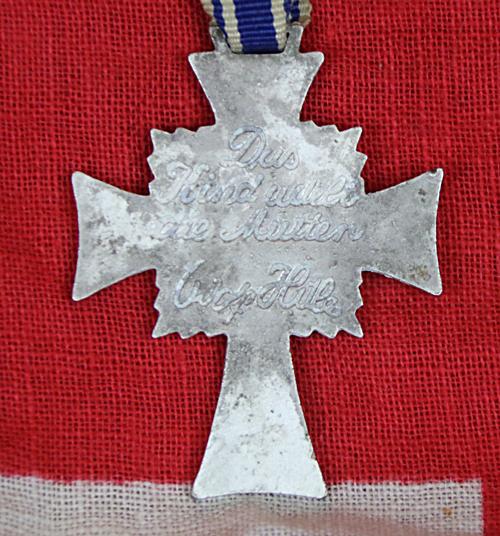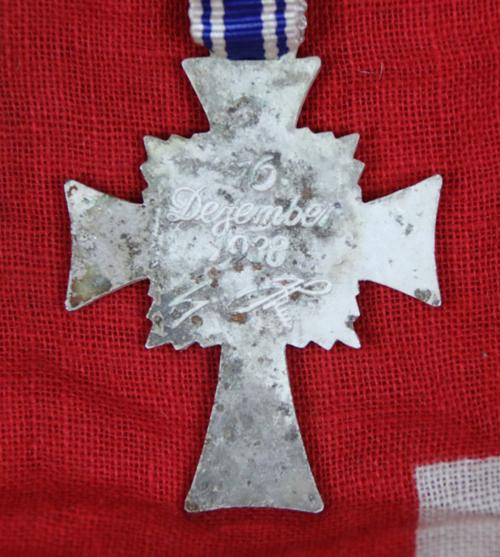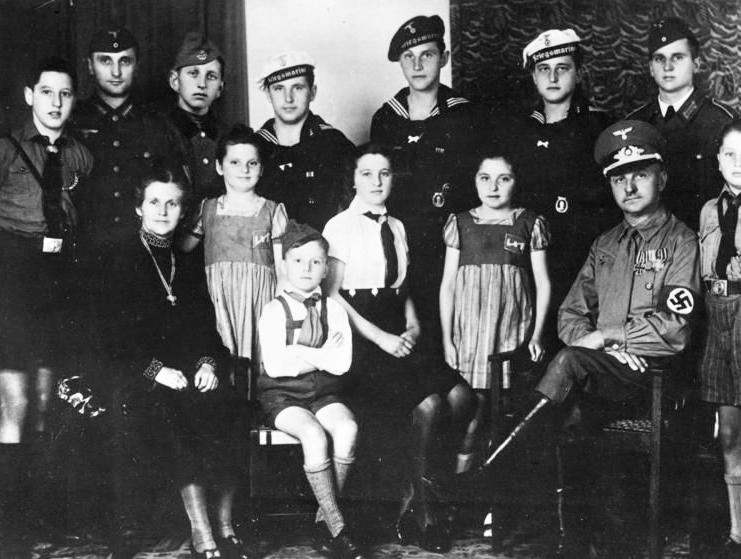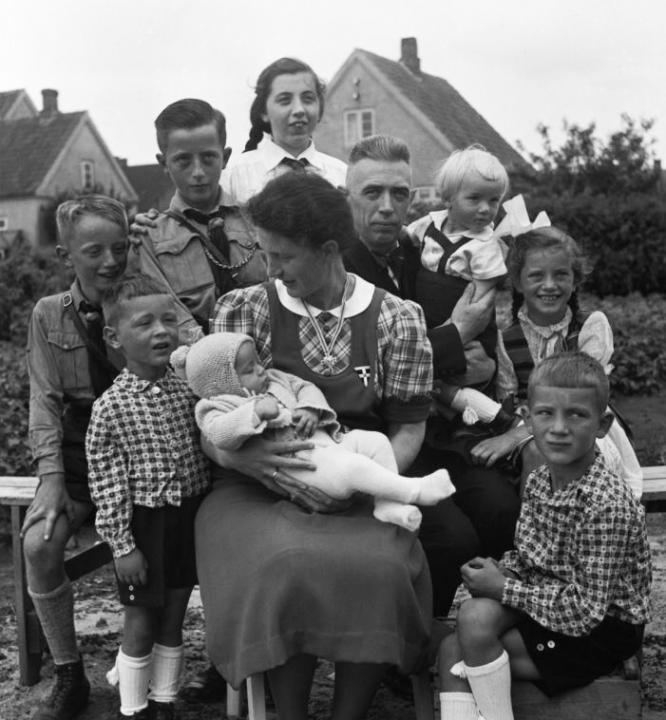Set of Three German Mutterkreuz, Early Ist Pattern in Silver, Two 2nd Patterns in Gold & Silver
The first is a very rare example of the first pattern Mutterkreuz Mother's Cross in silver in good condition. all awarded to the same lady, but she was supposed to return the first pattern as it was an error in the Third Reich distribution, which is why it is so rare. 85% of the value of the three medals is for the very rare Ist pattern medal
The Cross is more or less identical to the more common later pattern, except that on the back is stamped "Das Kindadelt dir Mutter' and the early style signature of Adolf Hitler. Later models have '16 Dezember 1938' and the later version of his signature. From 1933 to 1945 Hitler's signature changed a few times.
The 2nd is the gold cross 2nd pattern and the third a silver 2nd pattern.
The first pattern only existed for a very short time thus,. as a result, it is one of the rarest non military awards.
It was Adolf Hitler’s joint experiences of witnessing the manpower losses on the Western Front in WWI and deaths in his immediate family that were the behind a desire to encourage German mothers to have large families.
Three of Adolf’s siblings died as children and even his mother, who he doted on, died when he was just 18. By the time the National Socialists gained power Hitler had already formulated plans for expansion in the east with Lebensraum, or living space. The army, as well, would need those large families to provide a stream of new recruits. The honouring of motherhood was also another way of encouraging traditional German values to counter what Hitler, and many saw as the decadence of the more liberal, roaring ‘20s and early 1930s.
The result was a civil award that recognised the contribution of German mothers to the nation. The Ehrenkreuz der Deutschen Mutter, translated as the Cross of Honour of the German Mother, or as it more informally known, the Mother’s Cross, was instituted by statutory order on 16 December, 1938 by Adolf Hitler. The Cross was originally to be awarded on the second Sunday in May, or Mother’s Day, but as some three million German women were already eligible this was extended to include other important national occasions. It did mean that the first awards weren’t given until May 1939. The Mother’s Cross came in three grades, as follows:
Gold Cross – for mothers with eight or more children
Silver Cross – for mothers with six or seven children
Bronze Cross – for mothers with four or five children
Size: 36 x 46mm
Acquired from the estate of a late collector, acquired by him from his collecting period that commenced in the 1950's. Please note 85% of the value of this small collection is the the most rare ‘1st pattern’ silver example, these single and highly rare medals can easily achieve over £1000 today, 10 times the value of the 2nd patterns as we show here.
Photo 5 in the gallery shows the rear view of this 1st pattern mutterkreuz medal that was used to illustrate the versions in Militaria History published in 2018
Code: 23744
1095.00 GBP









